We are fortunate to live in an area that allows for winter gardening. With careful selection and by including a few preventative safeguards, we’re able to keep food growing all season long. When frost hits the garden does take a beating, but manages to pull through with few casualties. We haven’t entered the deep cold of winter just yet, but all the planting happens now. We have to get the seeds into the grounds and sprouting before nigh temperature drops too low.
FULL ROTATION
This is almost a completion flip of every garden bed, switching plants out completely as they get old and tired and slow down their production. There’s always a certain amount of guilt with pulling a pepper plant that has the buds of new fruit growing. But seeds won’t germinate when it’s too cold, and the warm weather crops are going to take much longer to ripen in the fall anyway. Sometimes we pull plants simply because we’re tired of eating them (ahem, cucumbers). Needless, to say, this is a very busy time of year.
We switch everything out over the course of four to six weeks. This way we ensure that something is always producing, and doing it all at once would be a long weekend anyway.
PLANNING
In an attmept to stop being willy-nilly about what goes where, we mapout all our crops ahead of time, so we don’t end up planting nothing but lettuce, or some other disaster.
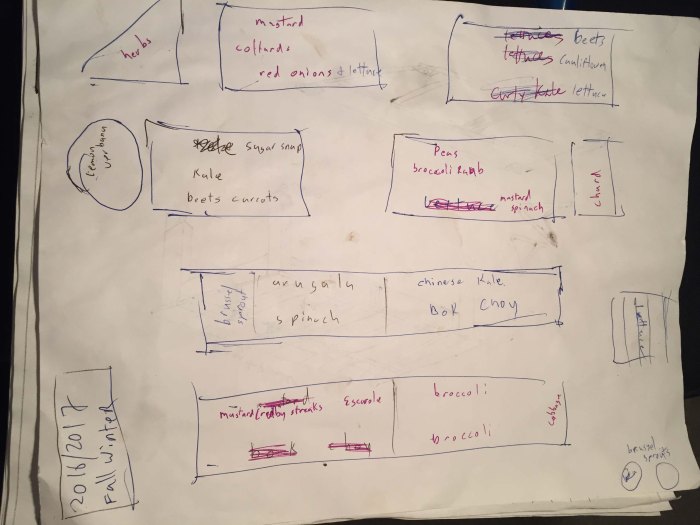
It’s a bit of chicken scratch, I’m afraid. We make the adjustments all the way up until the planting is done.
We keep the copy indefinitely (stored with our seeds) to keep a record of what went where in the past, so that we can be sure to switch it up the following year and avoid souring the soil.
COMPOST
All the scouting for extra grass clippings and leaves has really paid off. We had plenty of organic material available to fertilize the soil.
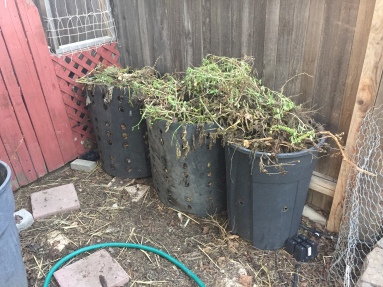
LEAFY GREENS
Leafy greens are a winter staple. They are so prolific and reliable that it is the best way to ensure we have fresh vegetables all season while the other plants grow to maturity
MUSTARD SPINACH
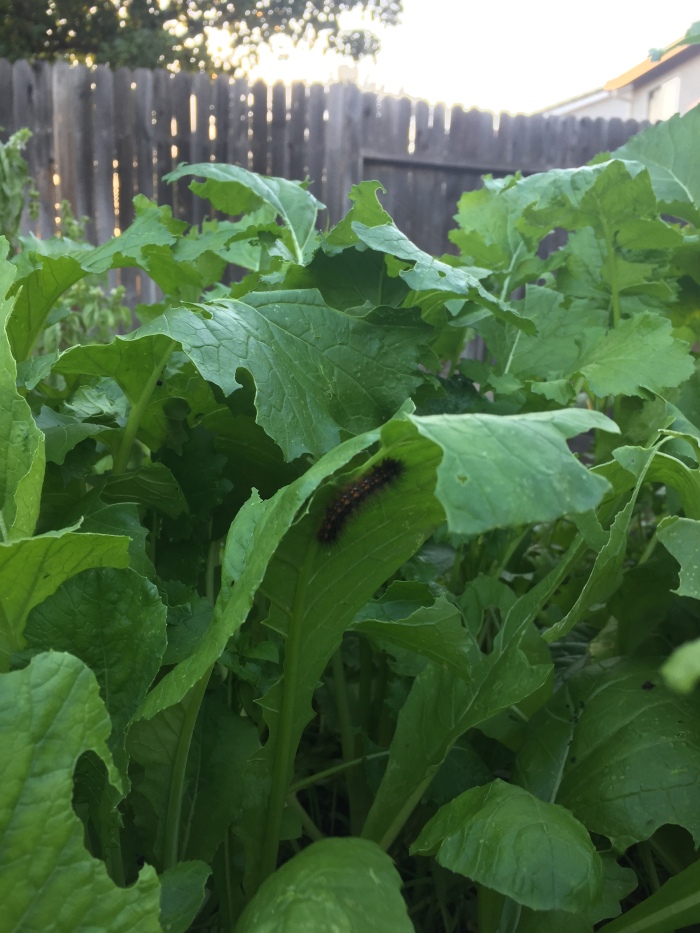
How to plant leafy greens: It might be lazy gardening, but we broadcast the seeds in a semi straight row that runs along the drip line. WAY more plants than will fit sprout, and gradually over time, we thin in between, getting early baby harvests. Seeds are cheap, and we want to set ourselves up for success, so you won’t catch us planting 2 seeds every six inches any time soon.
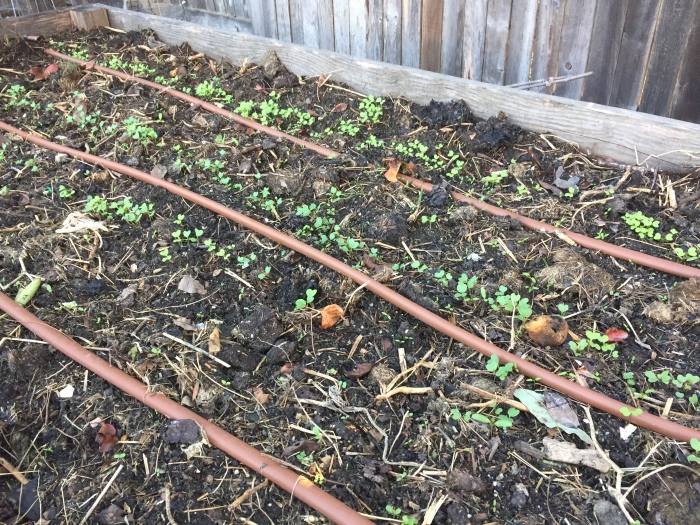
Broadcast seedling for mustard greens and collard greens. Always cute as babies.
Broccoli rab
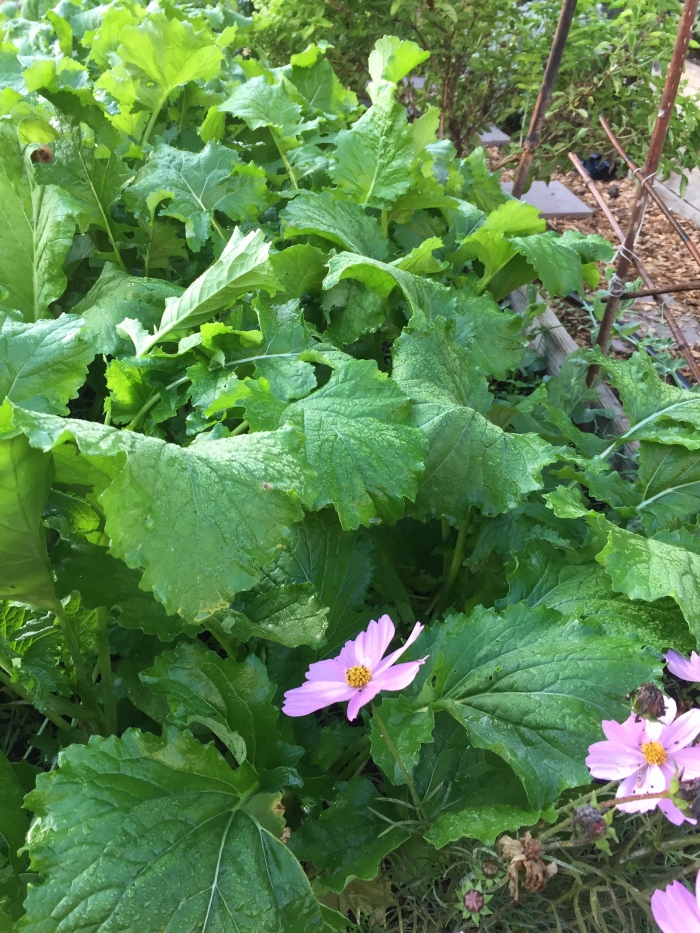
Broccoli Raab
A definite change in flavor. This is one 8-foot row in between the mustard spinach and the sugar snap peas.
SPINACH AND ARUGULA. There are two drip lines so we planted one crop on either side. The arugula is far more prolific than the spinach, so naturally it has crowded a little. We cut it back as a weekly harvest to leave room for the spinach to grow.
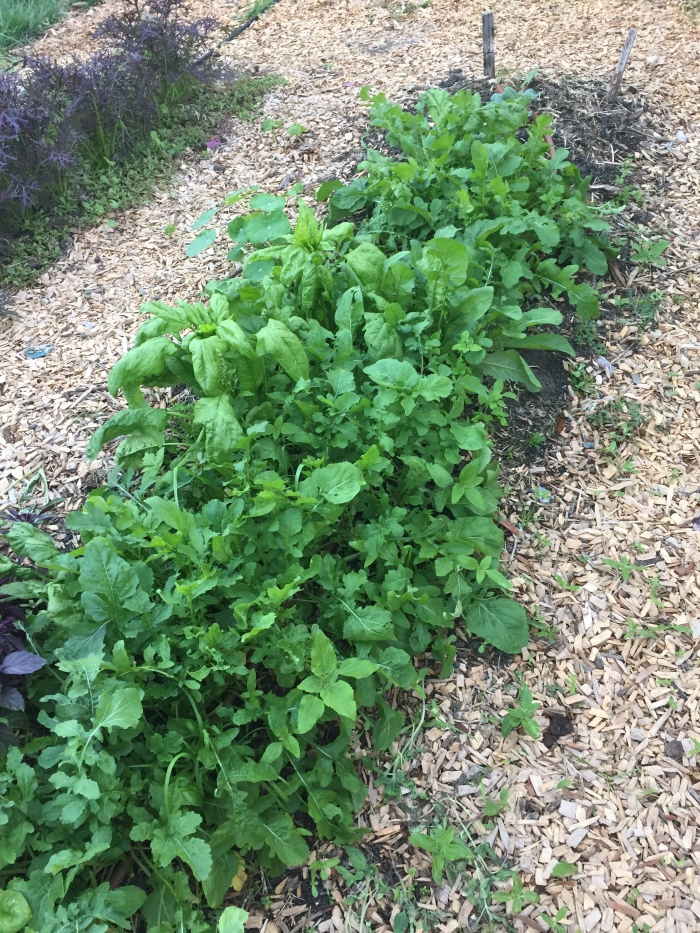
BOK CHOY

Bok Choy. Booming.
SWISS CHARD: This is actually a crop that grows in any season for us. These plants have been here since early summer and they still look amazing. Chard triumphant.
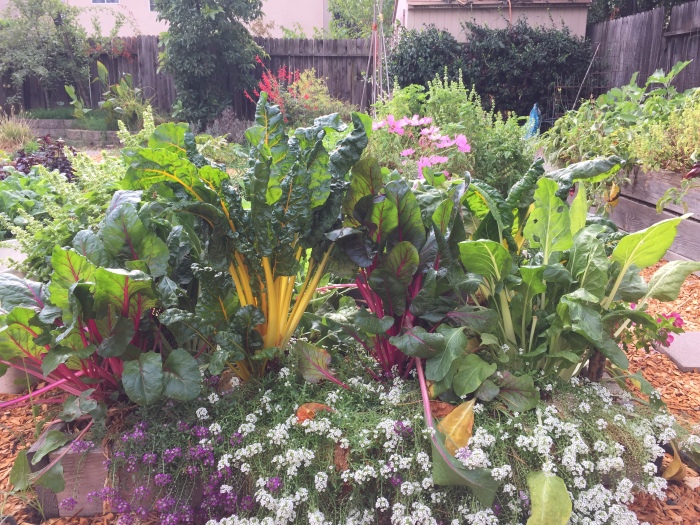
RUBY STREAK MUSTARDS: First year planting these. We’ll let you know how it goes.
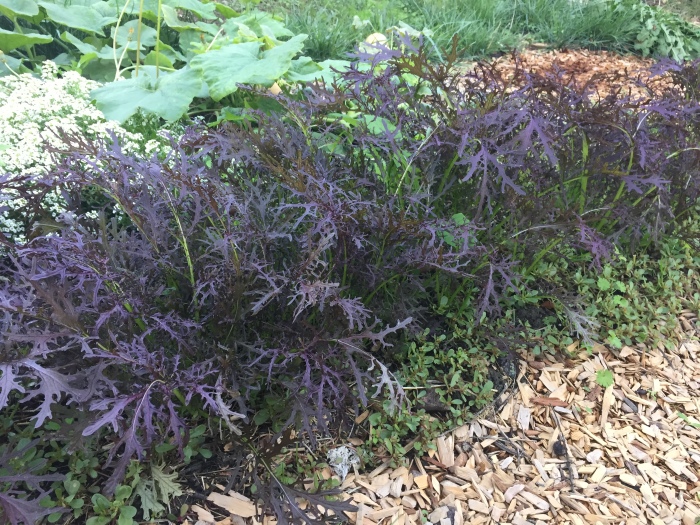
Ruby Streak Mustards
RUSSIAN KALE: Has been infected with aphids this year. We’re spraying them with a homemade soapy water solution to keep them at bay. Usually by now it’s cold enough that they go into hiding. Not this year. Still, here they are:
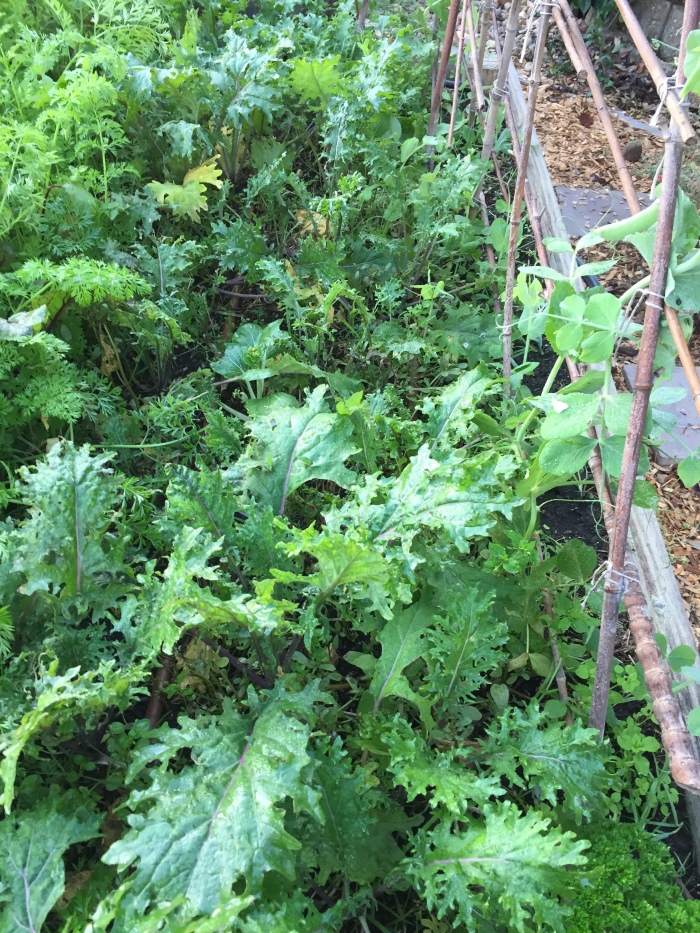
LETTUCES
I already showed the pallet bed of lettuce early this year, and it is thriving now. Lettuce gets bitter and a little stiff in warm weather, right now things are perfect. We’ve spread more seeds in a raised bed, many weeks later than those in the pallet bed, which technically is how you’re supposed to do things to keep fresh crops.
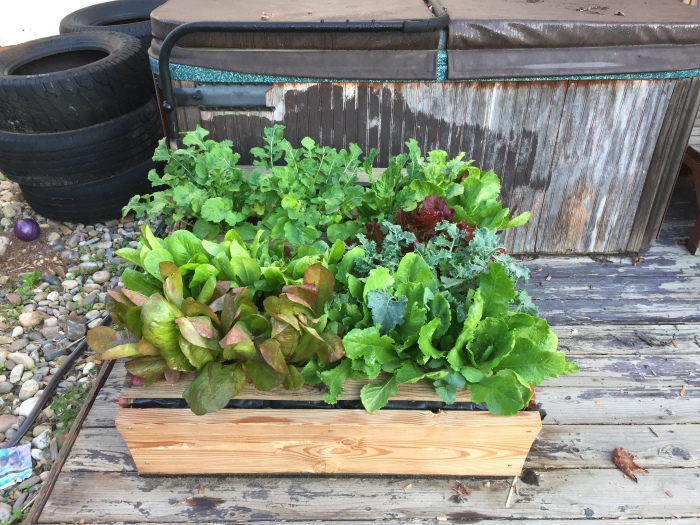
PEAS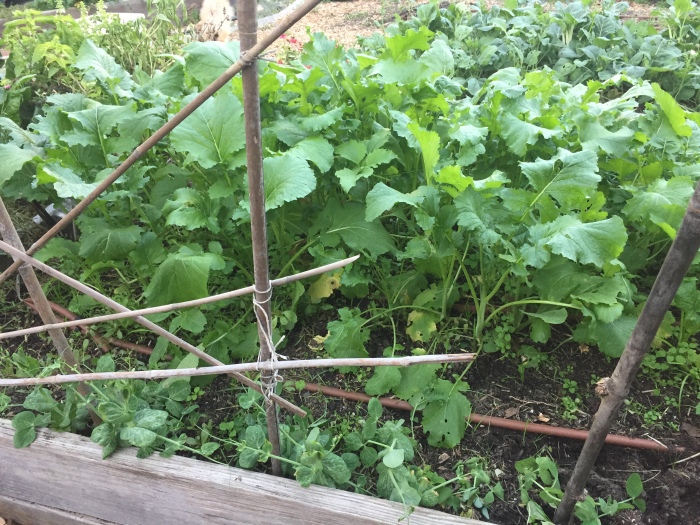
ROOT VEGETABLES
CARROTS: A dedicated carrot plot. A little crowded, but they always seem to do well.
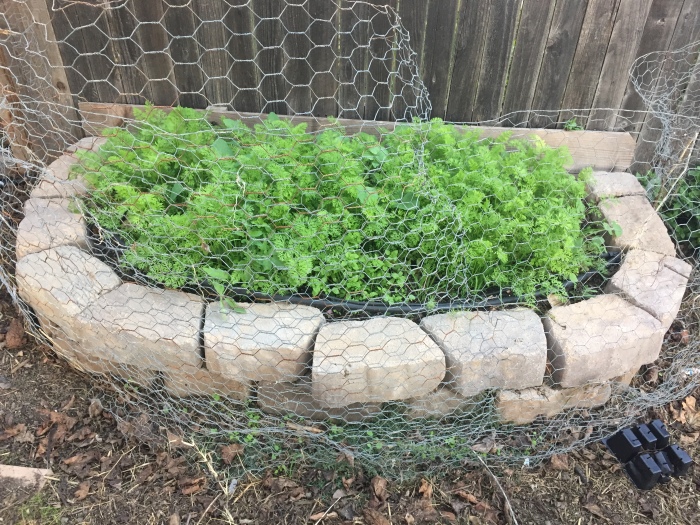
BEETS
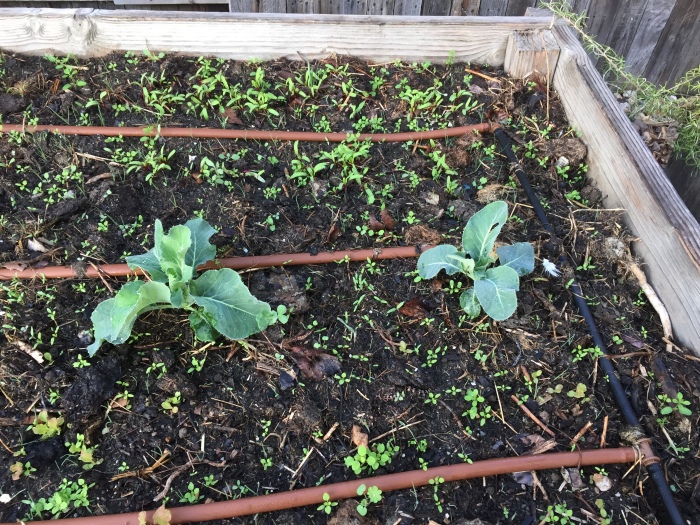
CARROTS AND BEETS
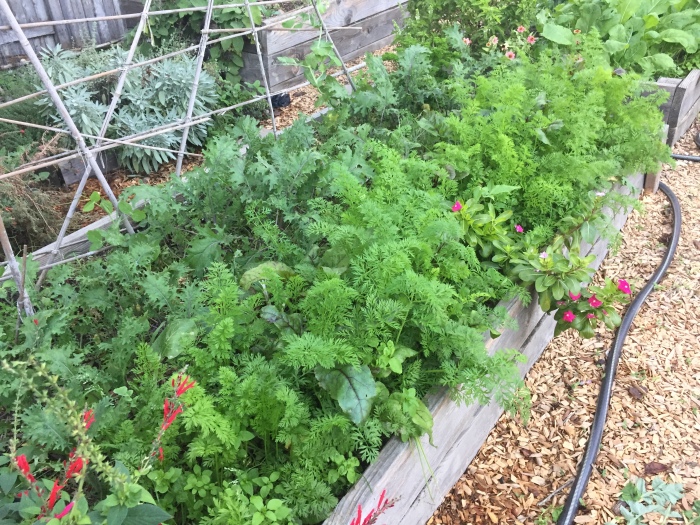
Carrots and beets sharing the front row, though those carrots seem to be having their way with those beets.
LARGER VEGETABLES
BROCCOLI: We’ve had moderate success with broccoli in the past. This year we’ve preloaded the soil with plenty of organic material and spaced them apart more than one foot. We’ve learned over time that not getting greedy with space makes a huge difference in a plant’s success. The broccoli are more than 12″ apart.
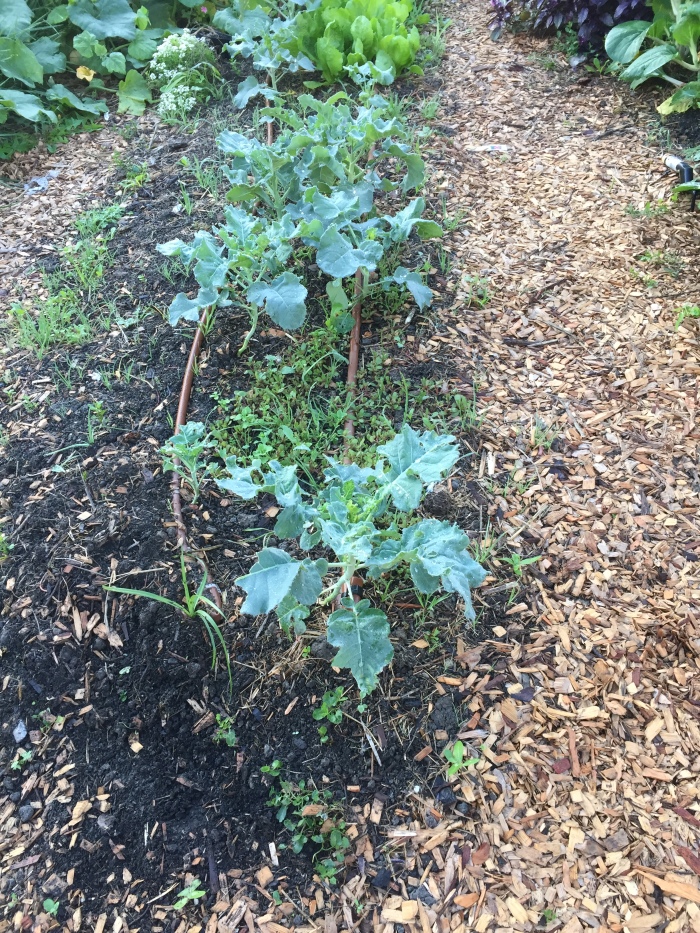
CAULIFLOWER: We sucked at cauliflower the first few times, but in more recent seasons have managed to do ourselves proud with
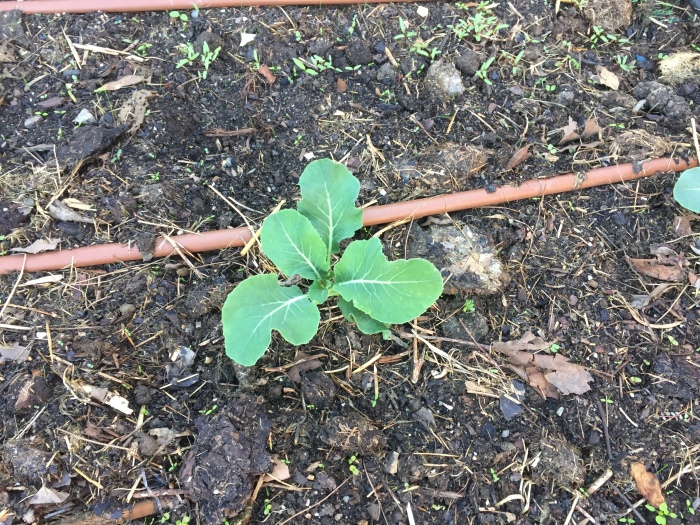
BRUSSEL SPROUTS: We, haven’t had much luck with brussel sprouts. But we’re going to give it another try this year.
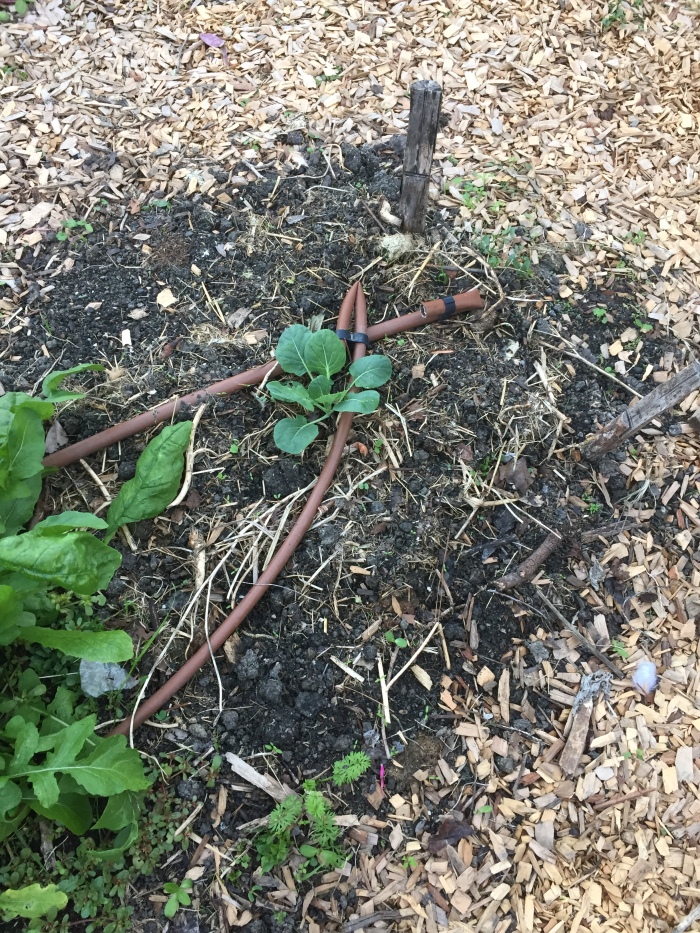
Brussel sprout seedling at the end of the line, with plenty of room to grow
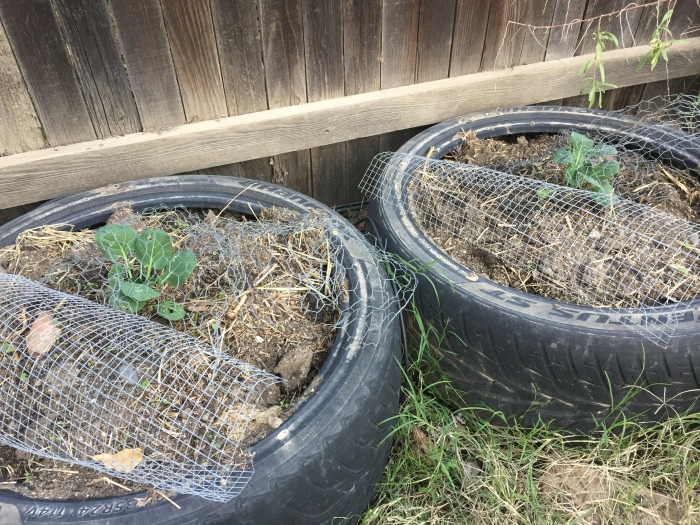
Brussel sprouts in tires. Excited about this project
How we planted: Full disclosure here. We bought seedlings at the store for all of these. The low cost of buying healthy plants that won against the time and effort investment of nurturing seedlings.
TIME INVESTMENT
INITIAL TIME AND INVESTMENT
We definitely didn’t rotate into a winter garden in one week. It’s the usual workload of turning soil, adding compost, planting seeds, then watering generously over the next several days until seedlings sprout.
UPKEEP INVESTMENT
Actually, upkeep is fairly low. A winter garden needs less watering, and while weeding is an option, we don’t always get around to it and things thrive just the same. The work becomes harvesting and cooking, and who is complaining about that?
NOT WITHOUT PROBLEMS
There is trouble in paradise, as it happens. The weather is warmer than it should be this time of year (and maybe that’s going to keep happening), and with that the aphids aren’t receding into hiding. They are all over the Russian kale.
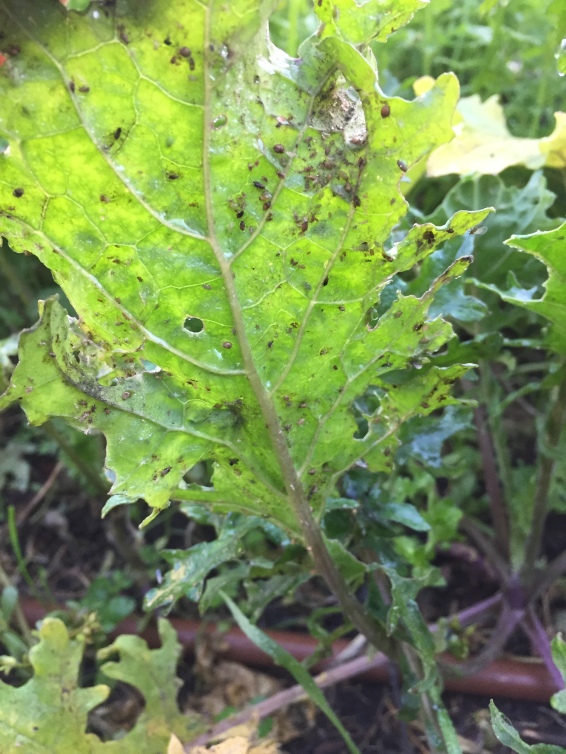
Kale leaf riddled with aphids
We deal with this a few ways. One is that we use a soapy water solution. So far it’s had success, but is a challenge with rain, and we are finding that we have to spray under each leaf to coat it and discourage the aphids.
The best solution is for the cold to come. If only.
We do salvage the harvested leaves by submerging them in water and letting them float for several minutes. Possibly 2-3 times in a row. And then a semi-thorough inspection – whatever you’re comfortable with.
And CATERPILLARS are definitely eating their fair share. We don’t nearly have the slug/snail problem that we used to ever since I started manually evicting them – the population has not recovered.
a caterpillar decimated a cauliflower plant:
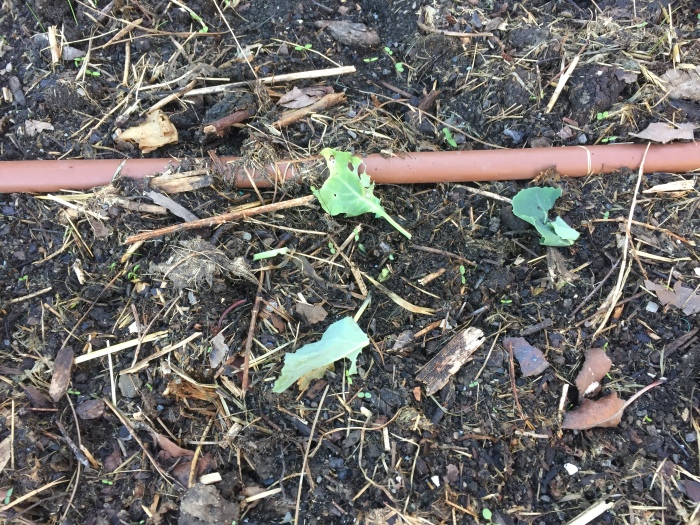
Cauliflower remnants after caterpillar attack. Had to be replaced.
And this guy:
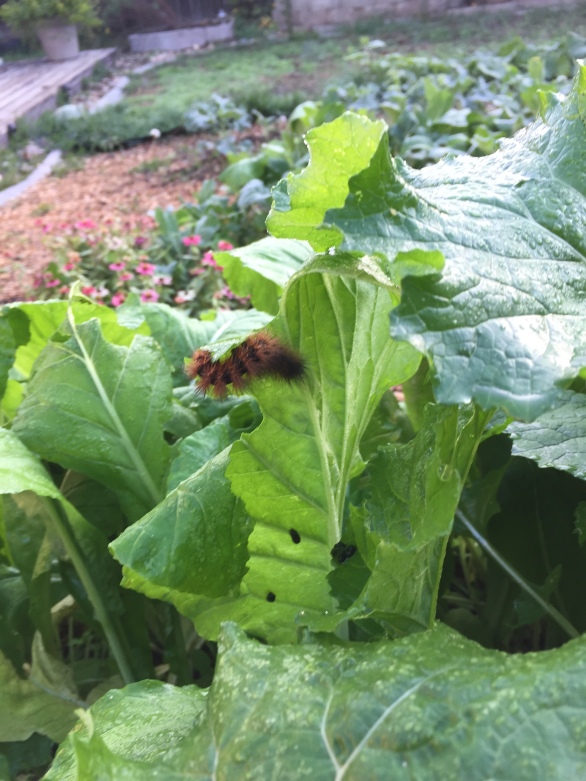
Look at how much of this leaf is gone because of this one furry guy. Probably been living there for a while.
We haven’t looked into sprays to handle this (and honestly don’t really want to). Since it’s a homestead operation, we opt for manual removal. Finding them in action is the tricky part. Searching under the leaves is helpful, and stirring the understory at ground level is useful.
At the end of the day there is plenty to go around, and having a few sacrificial leaves and/or plants is one way to protect the others.
